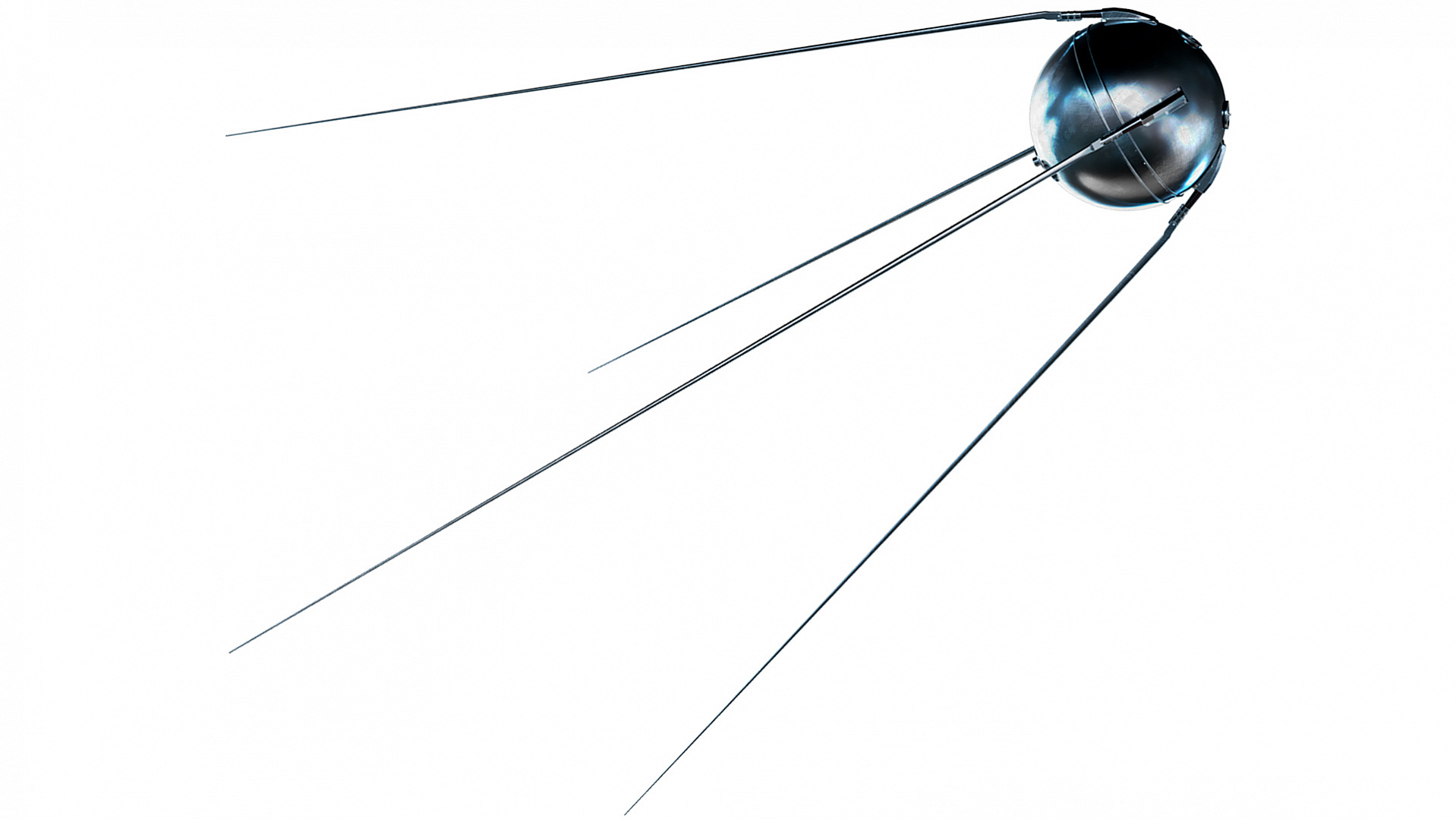The day of the beginning of space age

October 4, 1957, is forever marked in the calendar as the start of the space age of mankind. In 1957, on this day, the world's first artificial Earth satellite, built in the Soviet Union, was launched into orbit around the Earth.
The first spacecraft was developed at the Experimental Design Bureau-1 (also known as OKB-1, at present the RSC Energia) since November 1956 and was named PS-1, for “Prosteishiy Sputnik” No. 1 — the “Simplest Satellite” No.1.
The satellite, weighing less than 84 kilograms and slightly larger than a basketball, was a 58 cm-diameter pressurized sphere with four whip-like antennas: two pairs of antennas were 2.4 m and 2.9 m long. The top-level breakdown of the satellite total mass of 83.6 kg was as follows: structure — 13.9 kg, antennas — 8.4 kg, and payload — 58.4 kg.
A whole group of scientists, designers and engineers, headed by Sergei P. Korolev, the founder of practical cosmonautics, worked on its construction.
The launch was carried out by the "Sputnik" carrier rocket,which later ( after cosmonaut Yuri Gagarin went into space on April 12, 1961) received its official name —the Baikonur Cosmodrome.
295 seconds after the lift-off, the PS-1 and the rocket’s central block were placed into an elliptical orbit with an apogee of 947 km and a perigee of 288 km. At 315 seconds after the start, the artificial satellite separated from the second stage of the launch vehicle, and its call signs were heard around the world.
As a result, the satellite stayed in orbit only for 92 days, until January 4, 1958, making 1440 revolutions and covering almost 60 million kilometers; its radio transmitters worked for two weeks after the lift-off. The launch of the first artificial Earth satellite caused a stunning resonance all over the world.
The United States could replicate the success of the USSR only at 10:48pm EST on January 31 (03:48, on 1 February in GMT), 1958, by launching the Explorer-I satellite at Cape Canaveral Air Force Station in Florida, onboard a Juno I booster.
Following the successes achieved by the USSR and the USA in space exploration, other countries, such as the United Kingdom (1962), France (1965), Japan (1970), and China (1970), also began developing their own space programs, aimed at becoming independent space-fairing nations.
In honour of the launch of the first artificial Earth satellite on October 4, 1957, and the entry into force of the Treaty on Principles Governing the Activities of States in the Exploration and Use of Outer Space, on October 10, 1967, The General Assembly proclaimed the period from 4 to 10 October World Space Week with the goal of highlighting the role of space science and technologies for furthering the well-being of humanity and the Earth's environment.
RIPI Press Service